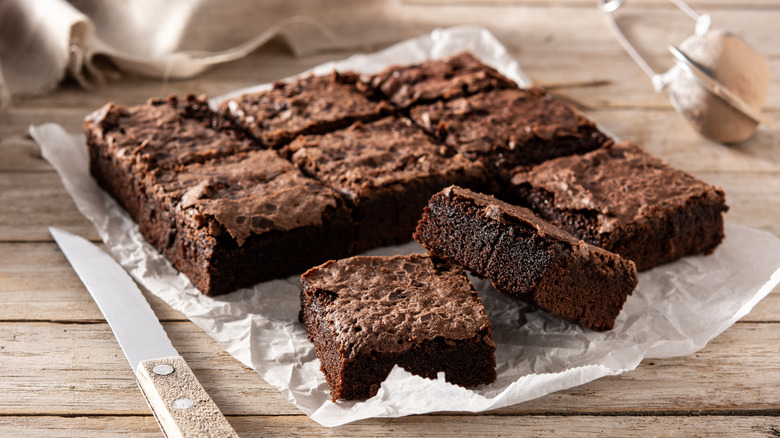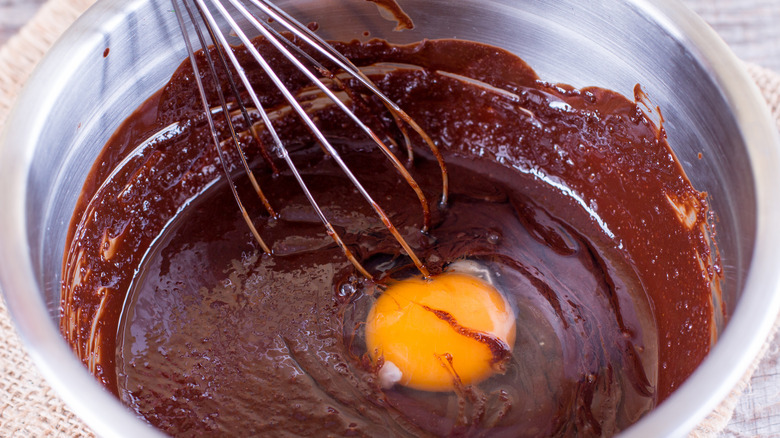The Reason You Shouldn't Add Cold Eggs To Brownie Batter
If you're new to baking, homemade brownies are a great place to start. Compared to other desserts like cakes and cookies, the texture isn't necessarily a make-or-break factor. A fudgy brownie tastes just as good as a cakey or a chewy one, and even if you overbake it, you're still left with some delicious brownie brittle. However, it's always best to have as much control as possible over the final result, so if you don't want to play roulette with the texture of your brownies, using room-temperature eggs is key.
Instead of adding cold eggs straight into your mixing bowl, America's Test Kitchen says you should be letting them thaw out a bit beforehand. Let them sit in warm water for at least 10 to 15 minutes, but ideally 65 minutes. By this point, they should be the perfect temperature to be added to brownie batter, and you'll notice the difference when you eventually take your dessert out of the oven.
What happens when you add cold eggs to brownie batter?
Adding cold eggs to brownie batter may seem minor, but according to Taste of Home, it can actually ruin the whole batch simply by altering the temperatures of the other ingredients. Most brownies call for both melted butter and melted chocolate, so by adding cold eggs, you're causing the other two to solidify. According to Science With That, melted butter behaves differently from softened butter, mainly in that it doesn't create as many air bubbles when baked. If you bake brownies with softened butter (or melted butter that's been mixed with cold eggs), the texture will be spongier like a cake.
As far as the melted chocolate goes, if the eggs are significantly cooler than the chocolate, they'll start to cook. Per Taste of Home, you can prevent this by mixing the eggs into the chocolate little by little. However, the best way to end up with perfectly fudgy brownies is to just start off with room-temperature eggs.

